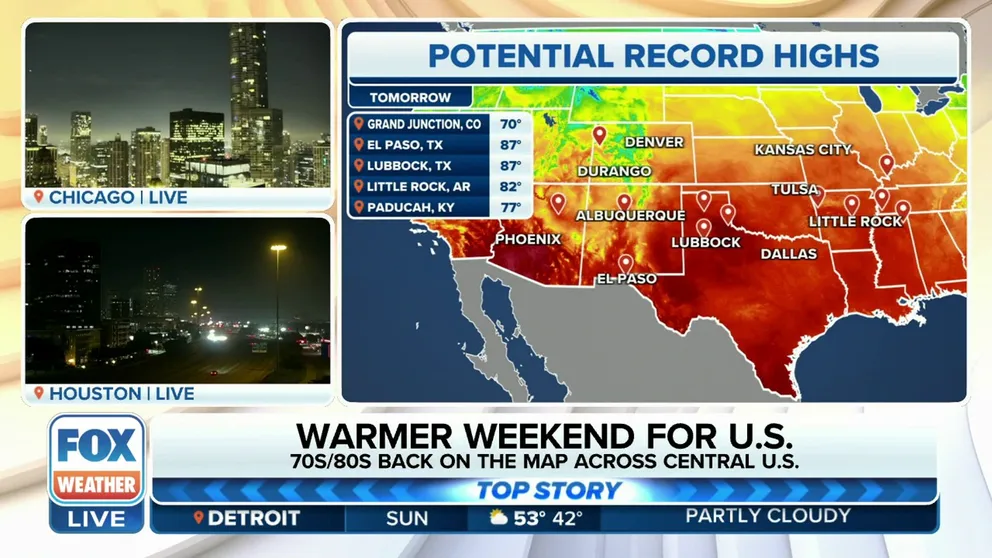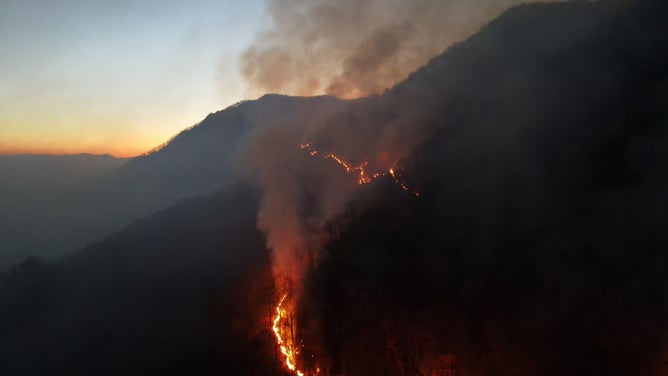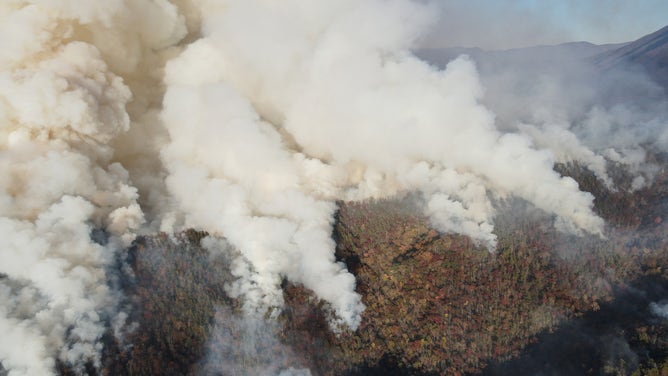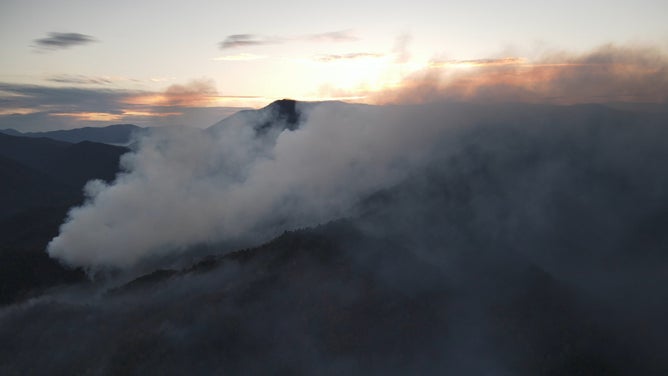North Carolina's Poplar Drive wildfire destroys homes as dry weather persists
The Poplar Drive Wildfire is one of several burning across the region. The Collett Ridge Fire burning near Andrews, North Carolina, was estimated to have consumed more than 1,300 acres.
260 million Americans feeling above-average temperatures on Sunday
More than 80% of the UY.S. will be feeling above-average temperatures as we close out the weekend, and the warm temperatures could break records as we enter a new workweek.
EDNEYVILLE, N.C. – Firefighters from across North Carolina are still busy battling a series of fires that are threatening homes outside of Asheville.
The U.S. Forest Service said the fire quickly grew to 250 acres as it consumed extensive dry brush, and was 5% contained by Sunday.
"Firefighters were able to hold the fires within most of the lines (Saturday) night, however, containment was lost in a few of the areas," the Henderson County Sheriff's Office said in an update Sunday morning.
Edneyville Fire and Rescue reported the Poplar Drive Wildfire was burning close to dozens of homes in Henderson County. Rangers with the North Carolina Forest Service said two homes had been destroyed, and one other sustained minimal damage. About 34 homes are under evacuation orders and are currently threaded by the fire.
Local deputies said anyone other than residents should avoid the area in order for the large firefighting operation to continue with minimal interruptions.
Dangerous wildfire weather conditions remain
National Weather Service meteorologists warned that an extensive dry air mass was in place that could lead to quick-growing wildfires.
Relative humidity values were estimated to be about 20%, which, when combined with dry fuels, was a recipe for an increased fire risk.

(FOX Weather)
"With dry conditions and low relative humidity expected to continue over the next several days, the N.C. Forest Service is strongly urging the public to postpone any and all outdoor burning," the Forest Service said.
A burn ban is in place for Henderson County.
Less than 100 miles west of Henderson County, firefighters were working what was known as the Collett Ridge Fire near the town of Andrews.
The U.S. Forest Service reported that the 1,335-acre fire was not threatening any homes, but a layer of thick smoke had settled near the ground. The fire is currently burning out of control with 0% containment.
The fire exploded in size over the weekend from 700 acres to more than 1,300 acres. The Forest Service said the increase in size was due to burning operations and fire activity fueled by dry conditions.
Firefighters said the fire was moving at a slow pace through the mountainside but was being enhanced by the recent fallen leaves.
Local authorities did not immediately address the causes of the wildfires, but they were likely human-induced because of a lack of thunderstorm activity.
Regional drought raising fire risk
Firefighters are battling several other wildfires in North Carolina as well as Tennessee and Georgia and drought is only making conditions worse.
Data from the U.S. Drought Monitor shows large parts of the Southeast and Tennessee Valley are dealing with drought conditions that make fires more susceptible.
SKIES TURN EERILY DARK OVER GREENLAND DUE TO CANADA WILDFIRES
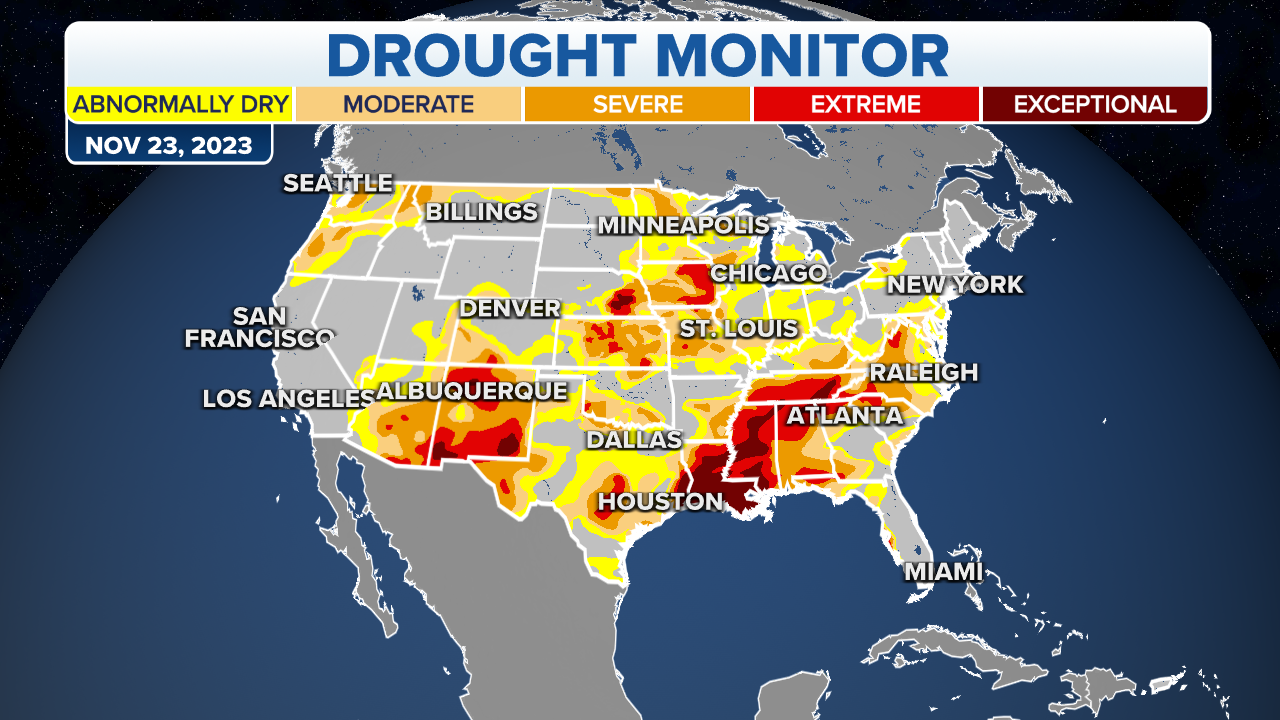
(FOX Weather)
Nearly 97% of Tennessee is dealing with abnormally dry or drought conditions. Figures are similar for communities in North Carolina, Mississippi, Alabama and parts of Georgia.
For many weather observation sites, the last stretch of rainy weather happened in mid-October with the passage of a stout cold front, but it did not end rainfall deficits.
The city of Atlanta is running a precipitation deficit of 7 inches for the year. Asheville, North Carolina, is more than 11 inches below normal.
Communities downwind of the fires also face the threat of poor air quality.
Local NWS offices have issued off-and-on air quality alerts, due to the threat of concentrations of particulate matter exceeding unhealthy standards.
Forecasters warned those who have respiratory ailments and live downwind of the larger blazes to limit prolonged outdoor exertion.
